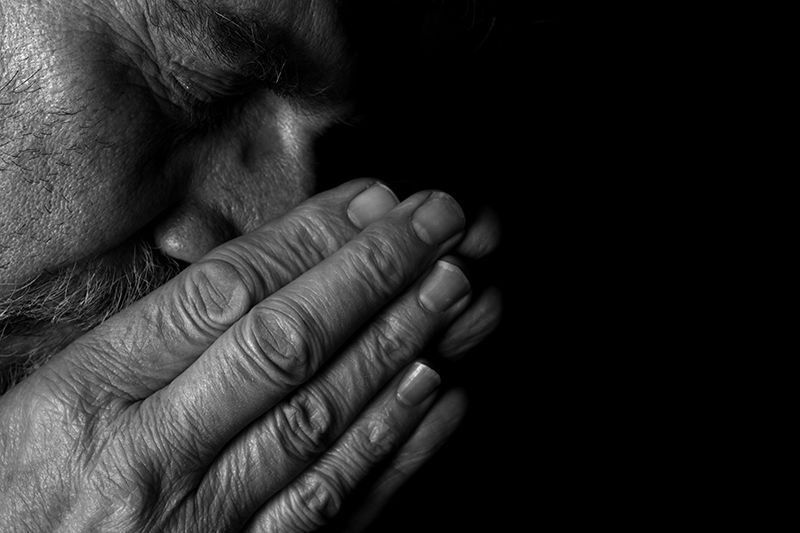Contemplative prayer, as it is classically defined and popularly practiced, is subject today to considerable skepticism in a number of circles. For example, the method of prayer commonly called Centering Prayer, popularized by persons like Thomas Keating, Basil Pennington, John Main and Laurence Freeman, is viewed with suspicion by many people who identify it with anything from “new age” to Buddhism to “self-seeking” to atheism.
Admittedly, not all of its adherents and practitioners are free from those charges, but certainly its true practitioners are. Understood and practiced correctly, this method of prayer — which allows for some variations in its practice — is, in fact, the form of prayer that the Desert Fathers, John of the Cross and the author of the “Cloud of Unknowing” call “contemplation.”
What is contemplation, as defined within this classical Christian tradition? With apologies to the tradition of Ignatius of Loyola, who formats things differently, but is very much in agreement with this definition, contemplation is prayer without images and imagination — that is, prayer without the attempt to concentrate one’s thoughts and feelings on God and holy things.
It is a prayer so singular in its intention to be present to God alone that it refuses everything, even pious thoughts and holy feelings, so as to simply sit in darkness, in a deliberate unknowing, within which all thoughts, imaginations and feelings about God are not fostered or entertained, as is true for all other thoughts and feelings. In the words of “The Cloud of Unknowing,” it is a simple reaching out directly toward God.
In contemplative prayer, classically understood, after a brief, initial act of centering oneself in prayer, one simply sits, but sits inside the intention of reaching out directly toward God in a place beyond feeling and imagination where one waits to let the unimaginable reality of God breakthrough in a way that subjective feelings, thoughts and imaginations cannot manipulate.
And it is precisely on this point where contemplative prayer is most often misunderstood and criticized. The questions are: Why shouldn’t we try to foster and entertain holy thoughts and pious feelings during prayer? Isn’t that what we’re trying to do in prayer? How can we be praying when we aren’t doing anything, just sitting? Isn’t this some form of agnosticism? How do we meet a loving, personal God in this? Isn’t this simply some form of transcendental meditation that can be used as a form of self-seeking, a mental yoga? Where’s Jesus in this?
I will let the author of “The Cloud of Unknowing” reply to this:
“It would be very inappropriate and a great hindrance to a man who ought to be working in this darkness and in this cloud of unknowing, with an affective impulse of love to God himself alone, to permit any thought or any meditation of God’s wonderful gifts, kindness or his work in any of his creatures, bodily or spiritual, to rise up in his mind so as to press between him and his God, even if they be very holy thoughts, and give him great happiness and consolation. … For as long as the soul dwells in this mortal body, the clarity of our understanding in the contemplation of all spiritual things, and especially of God, is always mixed up with some sort of imagination.”
We cannot imagine God; we can only know God.
In essence, the idea is that we may never mistake the icon for the reality. God is ineffable and, consequently, everything we think or imagine about God is, in effect, an icon. Even the words of Scripture itself are words about God and not the reality of God. Admittedly, icons can be good, so long as they are understood precisely as icons, as pointing to a reality beyond themselves; but as soon as we take them for the reality, our perennial temptation, the icon becomes an idol.
The difference between meditation and contemplation is predicated on this: In meditation we focus on icons, on God as God appears in our thoughts, imagination and feelings. In contemplation, icons are treated as idols and the discipline then is to sit in a seeming darkness, beneath a cloud of unknowing, to try to be face-to-face with a reality that is too big to grasp within our imagination.
Meditation, like an icon, is something that is useful for a time, but ultimately we are all called to contemplation. As the “Cloud of Unknowing” puts it: “For certainly, he who seeks to have God perfectly will not take his rest in the consciousness of any angel or any saint that is in heaven.”
Karl Rahner agrees: “Have we tried to love God in those places where one is not carried on a wave of emotional rapture, where it is impossible to mistake oneself and one’s life-force for God, where one accepts to die from a love that seems like death and absolute negation, where one cries out in an apparent emptiness and an utter unknown?”
That, in short, is contemplative prayer, authentic centering prayer, as a discipline.
Oblate of Mary Immaculate Father Ronald Rolheiser is a specialist in the field of spirituality and systematic theology.
His website is www.ronrolheiser.com.

